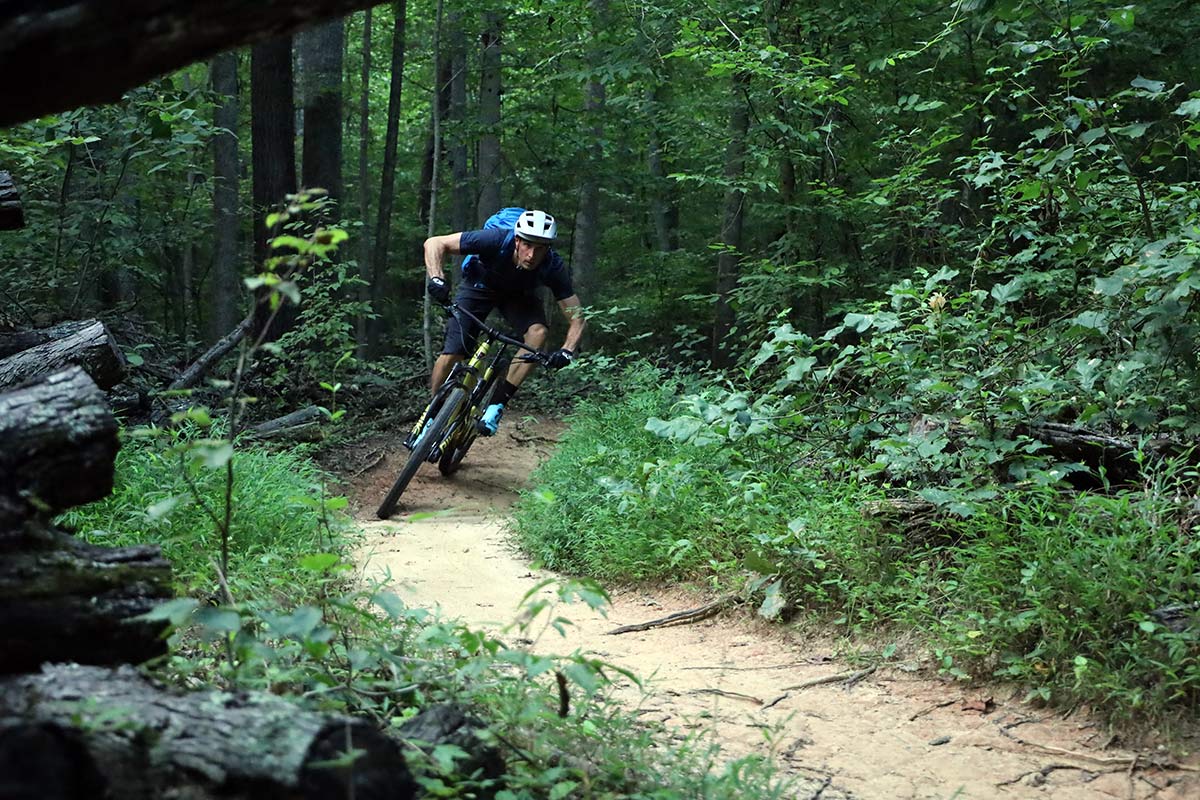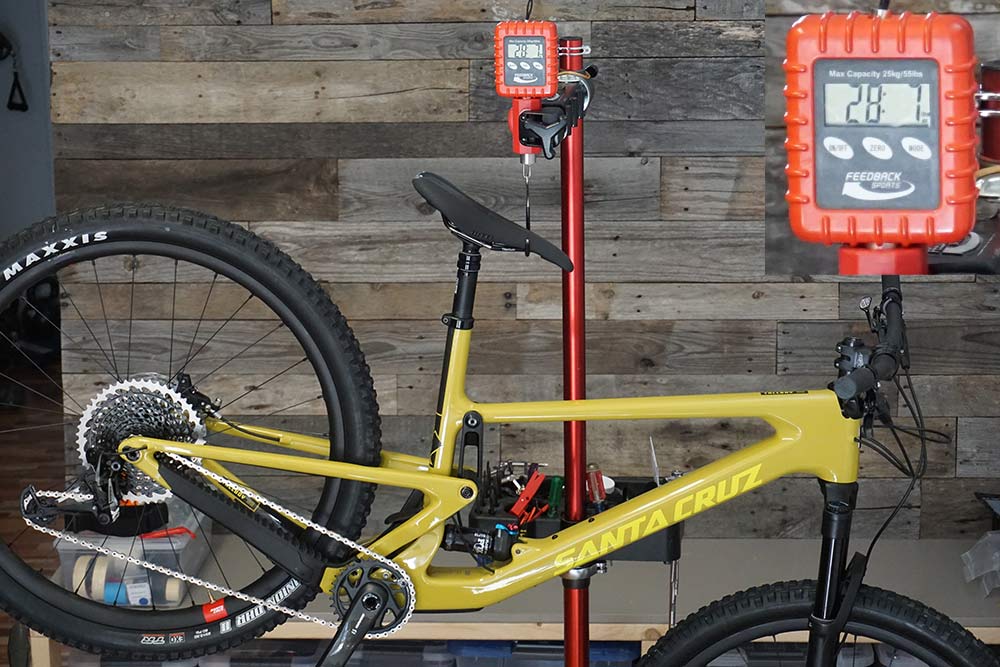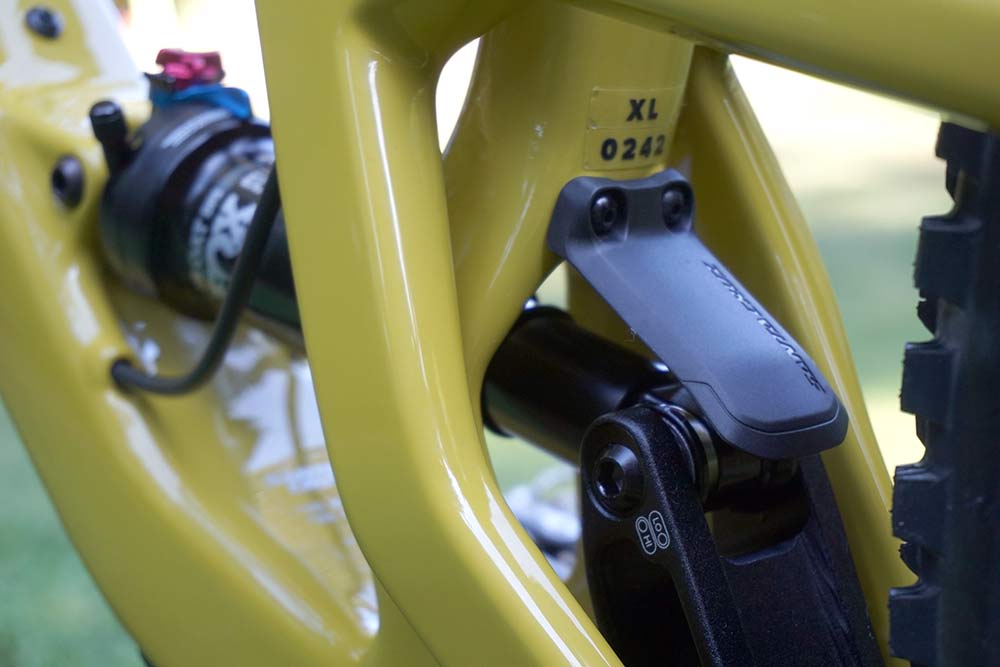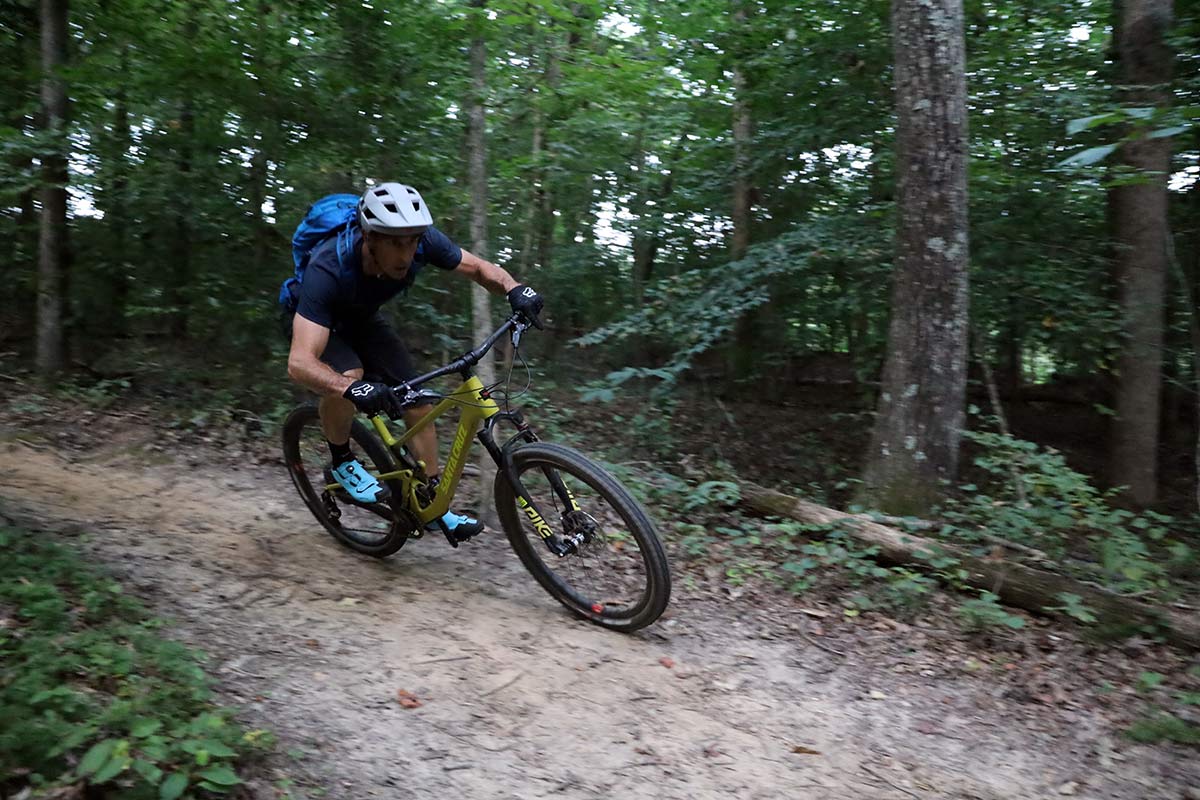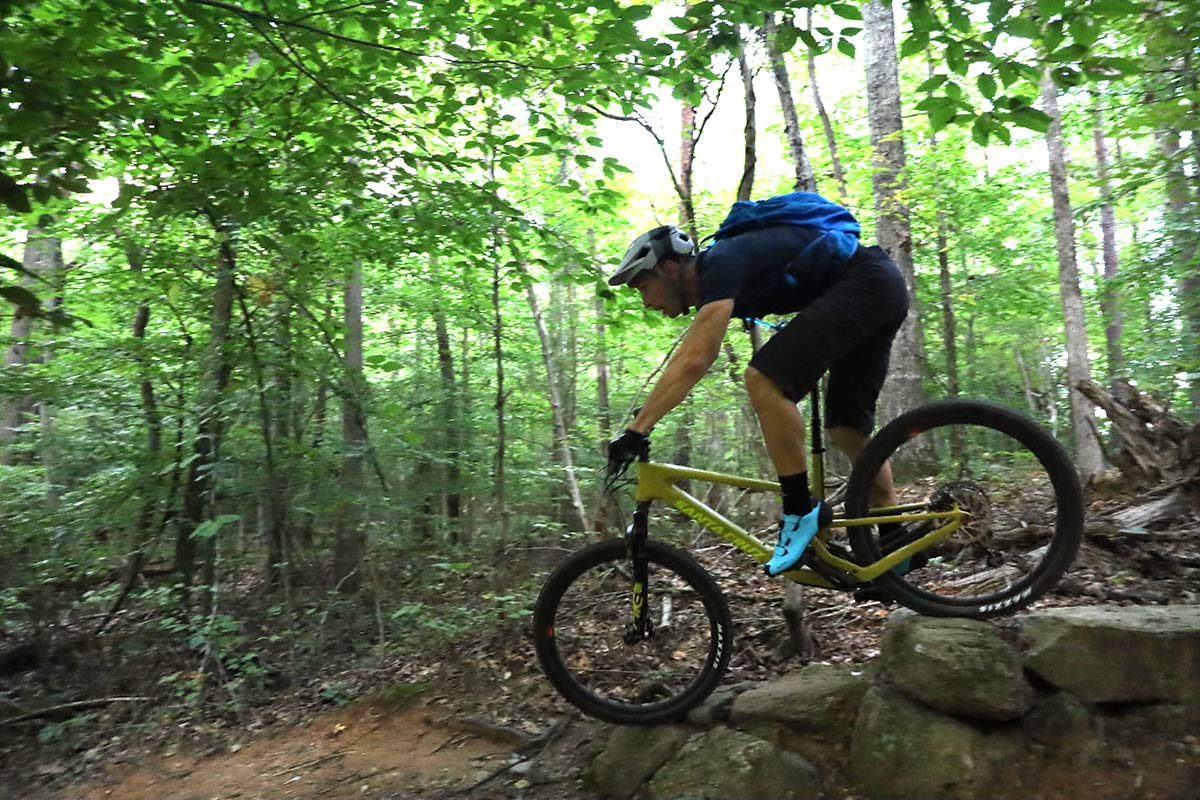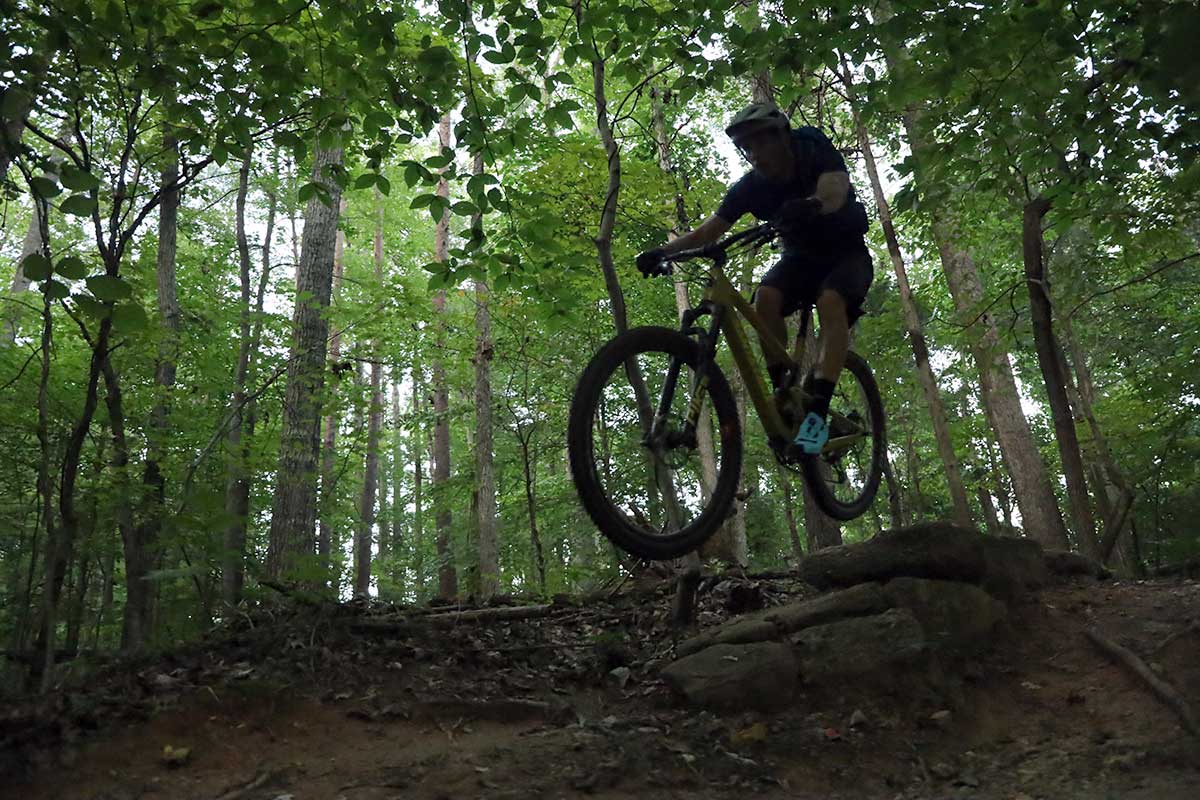With a complete overhaul, especially since the last time we reviewed a Tallboy, it was interesting to see what’s changed…and what’s remained the same. We’ve had the new Tallboy 4 for a couple weeks, getting two different riders on it for a couple rides each, with surprisingly similar first impressions. Here’s our thoughts, along with complete bike weights and setup notes…
2020 Tallboy Actual Weight
The size XL for a Tallboy CC X01 RSV build comes in at 28lb 7oz (12.9kg). That includes their carbon Reserve wheels on DT Swiss hubs, a SRAM X01 Eagle group, Rockshox Pike fork and Fox shock. Maxxis Minion DHF and DHR II tires come standard, already setup tubeless with Stan’s sealant.
The shock’s stanchion is pretty much buried inside the split seat tube, which makes it hard to reach the O-ring…and even harder to see. Some sort of sag ruler would be a nice addition to the box. But, and I’m not sure if this is included in normal consumer bikes, they did include several replacement derailleur hangers, which is always handy to have on hand.
It’s always fun to see what the suspension looks like fully compressed. The lower linkage is like a sideways “V”, with the top tilting forward as the rear triangle shifts upward and rotates forward.
Tallboy Ride Review
Much like a signature wine, the Santa Cruz Tallboy is a bike that exhibits serious terroir. If you’ve ever ridden the swoopy fast trails around Santa Cruz, where fast, loamy descents are the reward for extended climbs, then you’ll get it. And you’ll get why they’ve stretched the bike out so much compared to other 120mm trail bikes. It’s made to go fast, but climb really well to get to the good stuff quickly and efficiently.
Like other Santa Cruz mountain bikes I’ve ridden, their bottom brackets remain low, which helps keep the center of gravity low. Which is great for ripping descents and railing corners. Not as great for east coast roots and uneven rocky climbs. Both of us clipped our pedals way more than normal, and had to pay extra attention when climbing technical sections. That said, we receive the bike in “Low” mode and haven’t changed it yet, but that’s next on the list.
We also received the bike with the rear axle flip-chip set in the short position, which is where we’ll be keeping it. This bike’s wheelbase is already so long, and its head angle so slack, that the slower, tighter sections that east coast trails are known for are also a bit of a challenge on the new Tallboy. It’s a little slow around tight corners, or at least requires wider entry. Leaning the bike just a little farther into a turn helps, though. But when the trail opens up, and speeds increase, things get way more fun.
The bike has a big, solid presence that’s reinforced by a very stiff frame. You feel that heft when standing to sprint and rocking the bike back and forth, but you benefit from it when you make a mistake, come in a little hot and slide the rear end, or the tail gets a little too sideways in the air.
It’s super solid and stable at speed, pedals convincingly through rough sections, and felt very efficient, even with the shock in Open mode. It does get a little quicker feeling in the shock’s Trail setting, but it’s entirely pedal-friendly in Open, too. Pedal mode is tuned pretty firm, so we basically stayed out of that…it’s easier to get the bike through a corner quickly when we could compress the suspension a little.
Landing a jump or drop in Open is appropriately fluffy and absorbent, and in Trail mode it just feels planted. Like when James Bond falls through the ceiling and lands on a couch, it’s like “OK, next?”
The Tallboy seems to beg for more than our local trails can offer. We have a taste, now it’s time for a bigger meal. Stay tuned…(and check out the full tech post for more about the frame and suspension, too).
